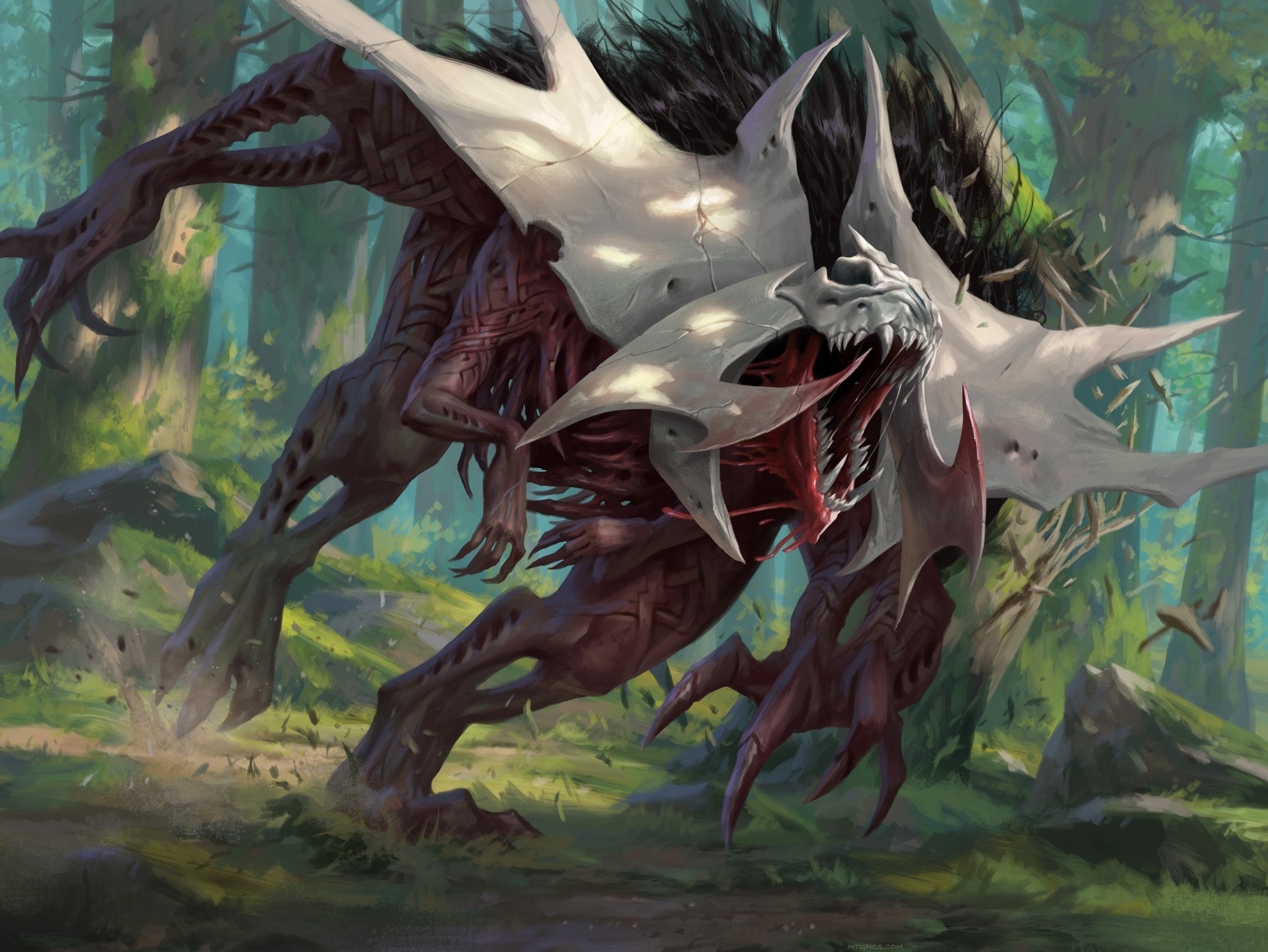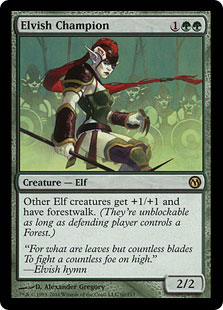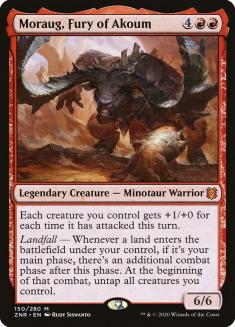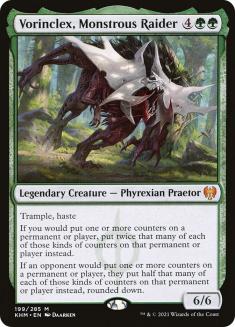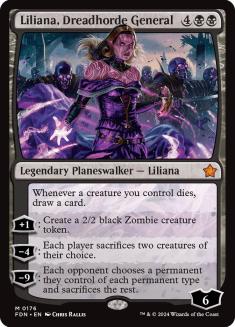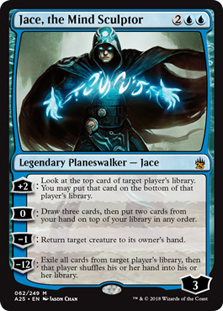Standard Disclaimer for Wizards of the Coast (WotC) employees who read this article: This article discusses business ideas to help WotC improve the Magic: The Gathering product. I give permission for any WotC employee to use the ideas contained in this article free and clear!
Last month, I wrote an article about three ways WotC could fix their foil problem. In today’s article, I’m going to take a deep dive into the current value of foil cards. Spoiler alert: It’s not good.
Years and years ago, I wrote an article titled Fifteen Fun Facts About Foils! That article was published in 2009 and it astounded me that so many of the points in that article are still relevant today. There are two facts in particular that I want to discuss today — the drop rate and the relative value of foil cards to their drop rates.
Prior to Core Set 2020, the drop rate of foils in Draft Boosters was 1 in 67 cards. This means that you’d have approximately a one-in-four chance of opening a foil in a Draft Booster (or 22.5% to be exact). Starting with Core Set 2020, the drop rate increased to 1 in 45 cards, or a one-in-three chance of opening a foil in a Draft Booster (almost an exact 33.33% repeating chance). All of these numbers are thrown out of the window for Set Boosters, Collector Boosters, or boosters from Masters sets.
Just so we have a common ground for discussion, let’s do the math just using Draft Booster boxes. Let’s use a typical set that includes the following rarity breakdown:
- 15 mythic rare
- 53 rare
- 80 uncommon
- 101 common
- 20 basic land
This is one of the most common set sizes for large-set releases in the mythic rare era of Magic. If we apply the 22.5% foil drop rate and the frequency in which the cards appear, we’re looking at the following per box:
- 1/6th of a mythic rare
- 1 rare
- 2 uncommons
- 5 commons/basic lands
This also means that if we’re extrapolating those odds for a specific card of a rarity, you’re looking at the following odds:
- Common/Basic Land: 1/24 boxes (or one every 864 boosters)
- Uncommon: 1/40 boxes (or one every 1,440 boosters)
- Rare: 1/53 boxes (or one every 1,908 boosters)
- Mythic: 1/90 boxes (or one every 3,240 boosters)
Let’s do a more concrete representation of this math, using Core Set 2015 as an example.
Common
- Bulk non-foil common price: $0.15
- Bulk foil common price: $0.25
- Bulk common price differential: 1.66x
- Average non-foil common price: $0.16
- Average foil common price: $0.46
- Average common price differential: 2.87x
- Largest common price differential: 32x (Elvish Mystic — $0.25 versus $8)
- Any one specific non-foil common appears once every ten boosters (some missing for foils)
- Any one specific foil common appears once every 864 boosters
- Specific foil commons are 86.4x more scarce than specific non-foil commons
Uncommon
- Bulk non-foil uncommon price: $0.25
- Bulk foil uncommon price: $0.50
- Bulk uncommon price differential: 2x
- Average non-foil uncommon price: $0.36
- Average foil uncommon price: $1.14
- Average uncommon price differential: 3.17x
- Largest uncommon price differential: 10x (Reclamation Sage — $0.40 versus $4)
- Any one specific non-foil uncommon appears once every twenty boosters
- Any one specific foil uncommon appears once every 1,440 boosters
- Specific foil uncommons are 72x more scarce than specific non-foil uncommons
Rare
- Bulk non-foil rare price: $0.50
- Bulk foil rare price: $2
- Bulk rare price differential: 4x
- Average non-foil rare price: $2.55
- Average foil rare price: $6.28
- Average rare price differential: 2.46x
- Largest rare price differential: 13.3x (Yisan, the Wanderer Bard — $0.75 versus $10)
- Any one specific non-foil rare appears once every 60.5 boosters
- Any one specific foil rare appears once every 1,908 boosters
- Specific foil rares are 31.5x more scarce than specific non-foil rares
Mythic Rare
- Bulk non-foil mythic rare price: $1
- Bulk foil mythic rare price: $3
- Bulk mythic rare price differential: 3x
- Average non-foil mythic rare price: $8.03
- Average foil mythic rare price: $12.27
- Average mythic rare price differential: 1.58x
- Largest mythic rare price differential: 4.5x (Soul of New Phyrexia — $2 versus $9)
- Any one specific non-foil mythic rare appears once every 121 boosters
- Any one specific foil mythic rare appears once every 3,240 boosters
- Specific foil mythic rares are 26.8x more scarce than specific non-foil rares
To sum up, in Core Set 2015:
- The average specific foil common is 86.4x more scarce than a specific non-foil common, but is only worth 2.87x as much.
- The average specific foil uncommon is 72x more scarce than a specific non-foil uncommon, but is only worth 3.17x as much.
- The average specific foil rare is 31.5x more scarce than a specific non-foil rare, but is only worth 2.46x as much.
- The average specific foil mythic rare is 26.8x more scarce than a specific non-foil mythic rare, but is worth only 1.58x as much.
I don’t have to be a great mathematician to tell you that the supply and demand curve on foil cards is skewed heavily towards supply. I already documented in the previous article why certain players might not want to play with foil cards, but what the math shows here is just how much people don’t want to play with foil cards. In a world where foil cards were valued solely on their scarcity compared to non-foil cards, they’d be worth 30x-40x their present value. The fact that the numbers are nowhere near this shows just how unpopular foils are to the vast majority of Magic players.
There are extenuating circumstances to some of these foil numbers. Magic Online set redemption is one factor, which causes entire foil sets to enter the marketplace (physically) at a one-to-one ratio on foils. The cards may be more rare while on Magic Online, but a redeemed foil set is just 1x every foil card, regardless of rarity.
There are also certain foils that used to be pre-packed in Theme and Preconstructed decks that were identical to the versions you could find in boosters. On certain cards, this also dropped the value of the foil versions significantly. The most famous example of this is the 8th Edition foil Elvish Champion.
We have 7th Edition, 8th Edition, 9th Edition, and 10th Edition non-foil Elvish Champion priced at $25 each. The foil versions of these cards are $180, $25, $40, and $40, respectively. There were so many foil Elvish Champions released in 8th Edition starter kits that it has, even over a decade later, still tanked the price relative to the non-foil version.
But wait! The numbers we’ve looked at so far are prior to two major changes to Magic:
- The foil drop rates in Draft Boosters went from 22.5% to 33.3%.
- WotC introduced two new pack types that have guaranteed foil cards: Set Boosters and Collector Boosters.
I don’t want to redo all of the math for the newer odds, because common sense tells you that if the disparity between price and scarcity was bad before, it’s going to be even worse now. Let’s just look at average value:
Kaldheim (Regular Versions)
- Average common value: $0.45 for foil versus $0.19 for non-foil (2.36x)
- Average uncommon value: $0.66 for foil versus $0.28 for non-foil (2.36x)
- Average rare value: $3.16 for foil versus $2 for non-foil (1.58x)
- Average mythic rare value: $12.30 for foil versus $10.85 for non-foil (1.13x)
The commons in this set are an outlier because of the snow lands, so the uncommons/rares/mythic rares are a much better representative. It’s at the point where (especially for the rares and mythic rares) the foil versions of the cards are worth barely more than the non-foil versions. Let’s look at another set for more data!
Zendikar Rising (Regular Versions)
- Average common value: $0.30 for foil versus $0.16 for non-foil (1.87x)
- Average uncommon value: $0.61 for foil versus $0.31 for non-foil (1.97x)
- Average rare value: $2.84 for foil versus $1.64 for non-foil (1.73x)
- Average mythic rare value: $8.15 for foil versus $7.30 for non-foil (1.12x)
We have Moraug, Fury of Akoum at $6 for both the non-foil and foil versions. We’ve sold 5x as many non-foil Moraugs as we have foil Moraugs, and we have been able to keep both foil and non-foil versions in stock. This is simply a supply/demand issue!
We’ve already established that historically, the relative supply on foils is much higher than the relative demand. This trend towards even further devaluation of foil cards is due to many factors.
- Increased drop rate in Draft Boosters. Foils are now around 11% more common than they were prior to Core Set 2019.
- Foils included in Set Boosters. Every Set Booster pack has a foil card. This means that instead of foils appearing once every three boosters (like they do in Draft Boosters), foils now appear once every pack (making them 3x less scarce than they previously were).
- Collector Boosters typically have eight or nine foils that can be found in both Draft and Set Boosters. This usually includes five commons, two uncommons, a foil rare or mythic (standard frame) and one special treatment card (like a foil full-art basic land for Zendikar Rising or a foil Lesson for Strixhaven).
- There are multiple special treatments of cards per set for most major set releases. It used to be that a foil version of a card was the rarest version of a card you could get from a set release. Now it’s typically an alternate-frame foil version of a card. Some have multiple alternate frames, such as Vorinclex, Monstrous Raider from Kaldheim (regular frame, Snow frame, Phyrexian language version). Some have six, such as the Strixhaven Mystical Archive cards, as detailed here.
I can understand that foils are being used as display cards for products in big box stores. What I don’t understand is what purpose foil cards serve for increasing the value of general Magic: The Gathering boosters. The empirical evidence shows that foil versions of regular cards barely make a blip in value for most set releases.
This goes back to the hierarchy of what people are looking to buy in singles. People generally either want the cheapest available version of a card (non-foil, regular printing) or the coolest/rarest version of the card they can find. To use the Moraug example above, where does the regular foil Moraug fit alongside a non-foil regular frame, a non-foil Showcase frame, and a foil Showcase frame? The majority of players are going to want a non-foil version, and the ones who want a foil version are going to gravitate towards the special treatment (showcase frame), leaving the regular foil version to sit on the shelves and collect dust.
Want the exception that proves the rule?
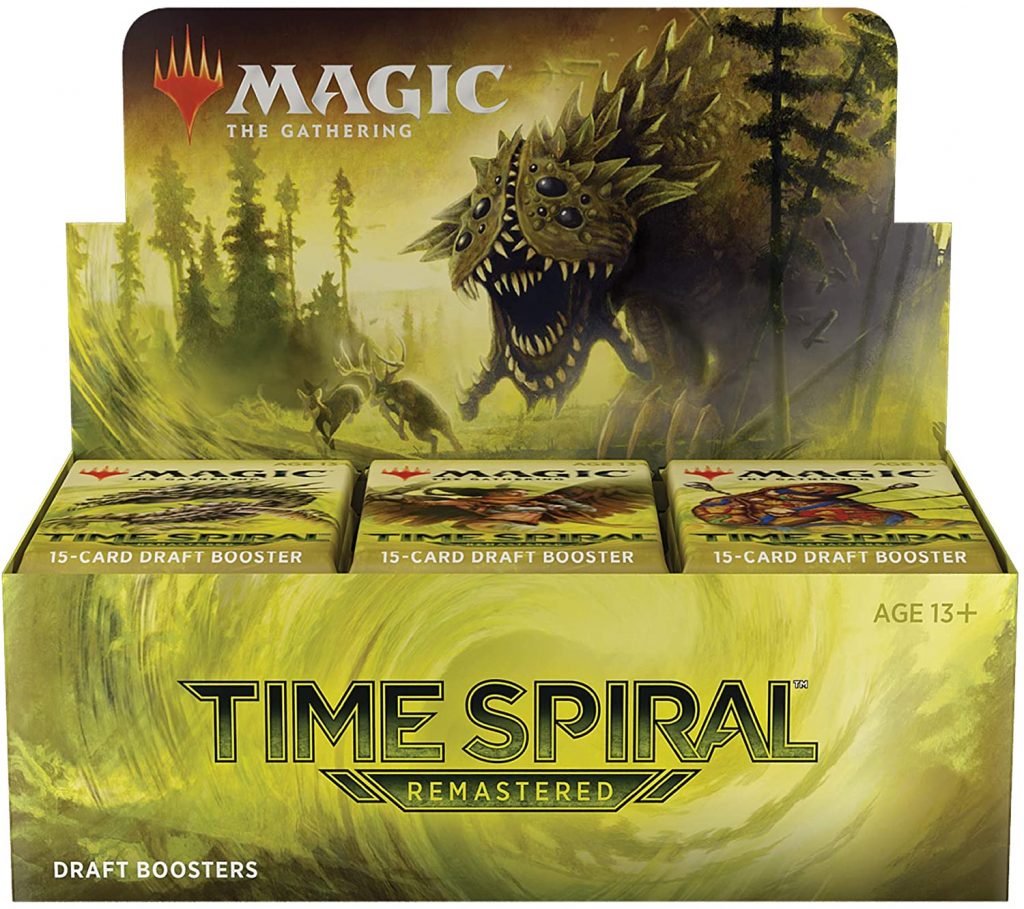
Time Spiral Remastered
- Average common value: $0.73 for foil versus $0.22 for non-foil (3.32x)
- Average uncommon value: $1.27 for foil versus $0.42 for non-foil (3.02x)
- Average rare value: $7.30 for foil versus $2.65 for non-foil (2.75x)
- Average mythic rare value: $31.53 for foil versus $15.37 for non-foil (2.05x)
- Average timeshifted value: $67.13 for foil versus $4.35 for non-foil (15.43x)
I went into a lot of detail on foil timeshifted cards in my Time Spiral Remastered Financial Review article. Suffice it to say, we had a convergence of multiple factors making the foil timeshifted cards super-valuable. The drop rates are low, there’s a large pool of cards at that rarity, the boosters are hard to find, the frame treatment is special, and the foil versions of these cards are the only other special treatment of these cards.
We’ve seen similar kickers on higher-end cards. The foil Phyrexian language version of Vorinclex, Monstrous Raider out of Kaldheim. The foil Japanese art version of Liliana, Dreadhorde General out of War of the Spark. Russian foil Jace, the Mind Sculptor out of Worldwake. What do all of these cards have in common? They are the rarest and most high-end version of each of these cards that exist in the marketplace.
I’ve said it before and I’ll say it again: the point of these articles isn’t to complain without offering solutions. I find that way of approaching things counterproductive. My goal here is to show that there is an issue — that foil cards are not desirable to the majority of players and their value and sales figures reflect that. I think that this is indisputable, based on the math. I also think that foils have an audience, and when used judiciously, foils can add value to Magic.
So here’s what I’d do in order to make foil cards achieve what WotC would most want — to drive sales and to have a value that adds genuine excitement and desire from the average Magic player.
- Remove foil cards entirely from Draft and Set Boosters. I’ve already shown that foiling adds virtually no value to the average Standard-legal Magic card. If WotC wants foil cards to be viewed as special, they need to make them special.
- Replace the foil treatment in Draft and Set Boosters with either extended-art or alternate-art treatment. WotC gave the extended-art treatment to every new Commander rare and mythic in Strixhaven Collector Boosters. They gave the extended-art or alternate-art treatment to all the rares and mythics in Strixhaven proper. Players respond better on average to the non-foil extended-art cards than they do to foil cards. Given the amount of cards getting special frame treatments, I don’t think it’s unreasonable to say that WotC could logistically give all the cards in the set some sort of special border treatment.
- Have foil cards appear only in Collector Boosters. Taking Zendikar Rising for example:
Current Configuration
- Slot 1: Foil token
- Slot 2: Foil basic land
- Slots 3-7: Foil standard-frame common
- Slots 8-9: Foil standard-frame uncommon
- Slot 10-11: Non-foil showcase common or uncommon
- Slot 12: Foil showcase common or uncommon
- Slot 13: Non-foil extended-art rare or mythic
- Slot 14: Non-foil borderless or showcase rare or mythic
- Slot 15: Foil standard-frame rare or mythic
- Slot 16: Foil alternate-frame rare or mythic
Proposed Configuration
- Slot 1: Foil token
- Slot 2-5: Foil standard-frame common
- Slot 6-7: Foil standard-frame uncommon
- Slot 8-11: Foil extended-art / alternate-art / alternate-frame common
- Slot 12-13: Foil extended-art / alternate-art / alternate-frame uncommon
- Slot 14: Foil standard-frame rare or mythic
- Slot 15: Foil extended-art / alternate-art / alternate-frame rare or mythic
- Slot 16: Foil version of a card from The List (or Wildcard Slot)
Keep foil basic lands in Bundles. Make it a selling point that foil basic lands for a set are unique to that product.
I think making these changes would have significant and beneficial impacts to both players and WotC. People are currently buying Collector Boosters primarily for slots #14 and #16 (extended-art and foil extended-art), which are the slots unique to Collector Boosters. Why not make it so that the entire pack replicates this experience and has value to the customer? The majority of players want non-foil cards to play with. Why not give the special frame treatment in the most commonly opened products (Draft and Set Boosters), where they will be more appreciated by players in general than the place that foil cards currently take?
It’s clear that the current strategy of distributing foil cards in Magic products is by-and-large suboptimal given purchasing patterns from players, the value of the cards, and the reasons why people are purchasing the different products. The revisions I propose above to the contents of Draft, Set and Collector Boosters might be radical (especially given that foils have been in Draft Boosters since Urza’s Legacy in 1999), but Magic is an ever-evolving game and product. Two years ago, Collector and Set Boosters didn’t even exist!
There’s also the argument that all-foil products have traditionally fared poorly. This includes the Premium Deck Series, and the Alara Block Foil Boosters. Those products had their own issues beyond being foil-only. For the Premium Deck Series, they were marketing all-foil decks to a casual crowd, and that crowd would much, much prefer to buy non-foil versions of those cards. For the Alara Block Foil Boosters, they were reprints of cards that already existed (from Alara block Draft Boosters) and had no excitement behind them. In the first case, it was a mismatch to the target audience. In the second case, it was an ill-advised product that had nothing special or new to justify its existence.
I’d rather WotC retool the use of foils to have them achieve the intended goal of foils — to be a driver of sales and to have both a real and perceived value higher than that of non-foil cards. Right now this is not happening to the best of the ability of the game. These changes would be a win-win. Players would get a cool version of cards they’re more likely to play with in Draft/Set Boosters (non-foil special frame). Collectors will have a product where all of the cards in the pack are genuinely collectible, because as it currently stands, the majority of cards in slots #2 through #12 in the current Collector Boosters go straight to the bulk bins.
Plus, if there’s one thing that WotC has learned from their Secret Lair drops, it’s that players really, really want to be able to choose if the product they’re buying is either entirely foil or entirely non-foil.
Feedback always welcome @StarCityBen on Twitter, or at [email protected] via e-mail!

